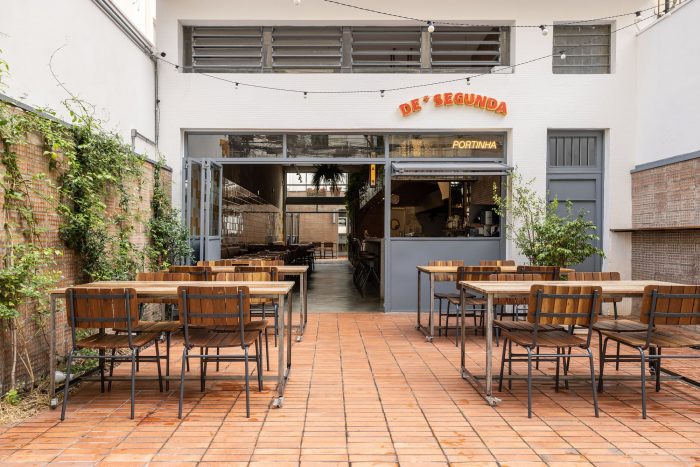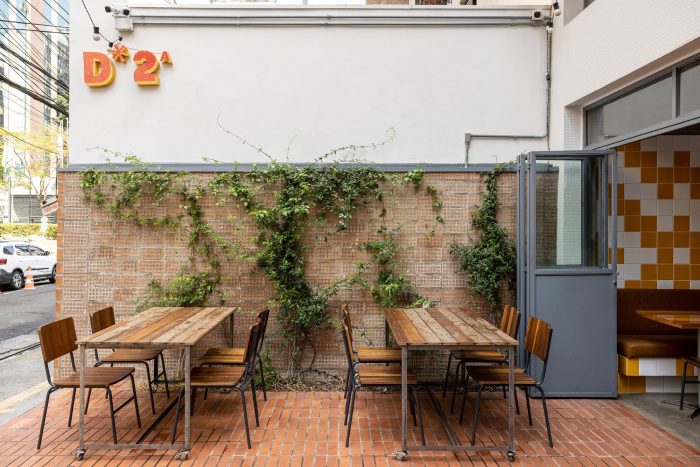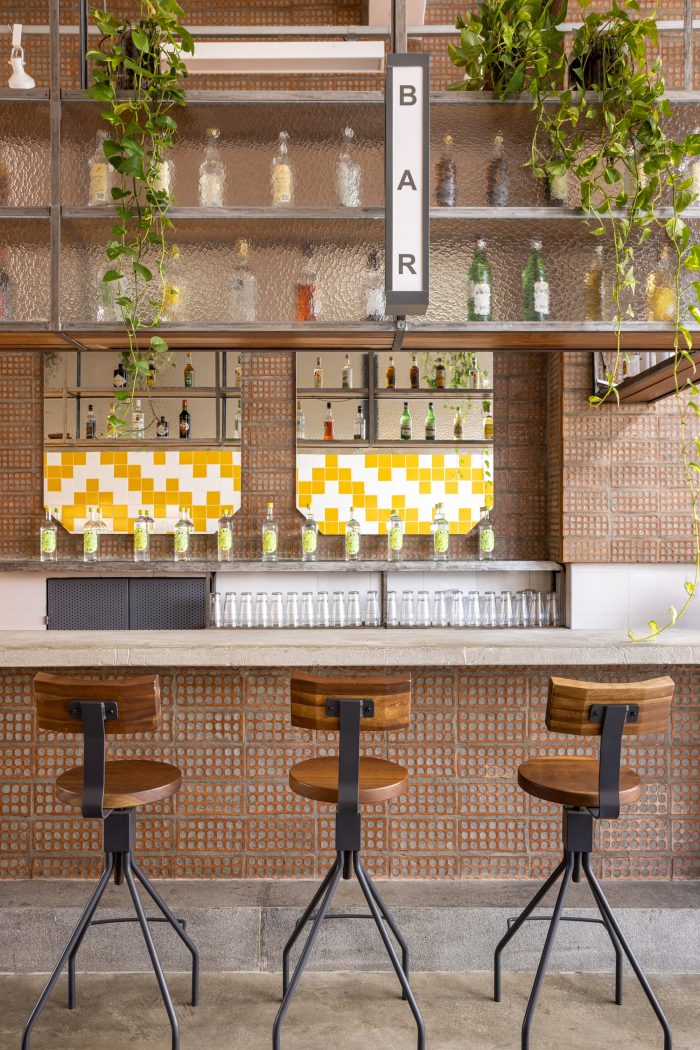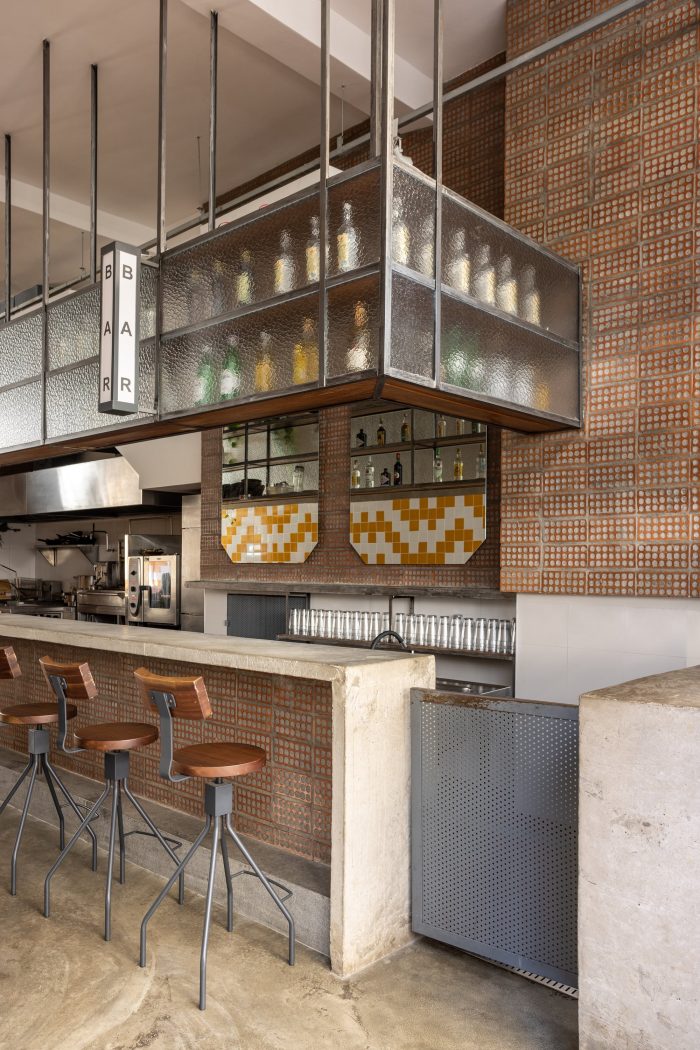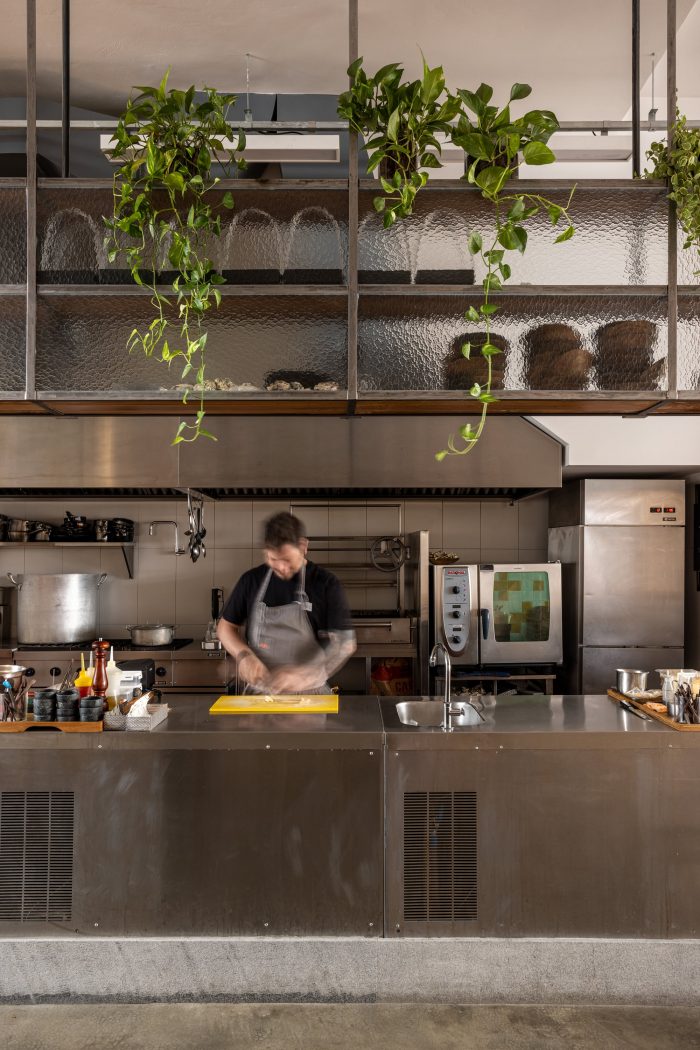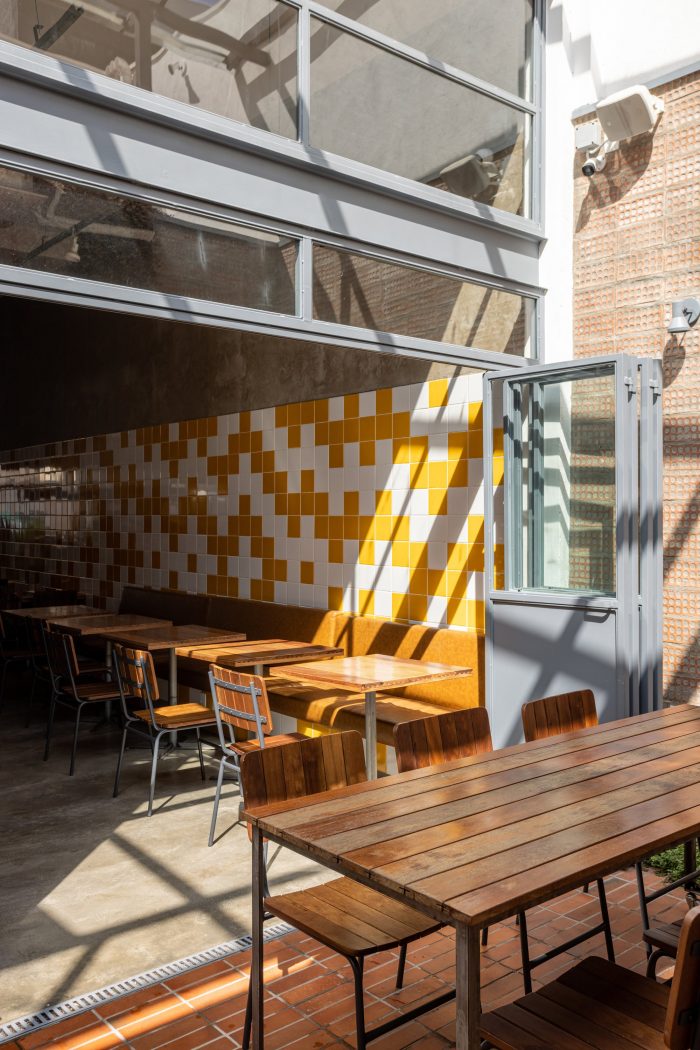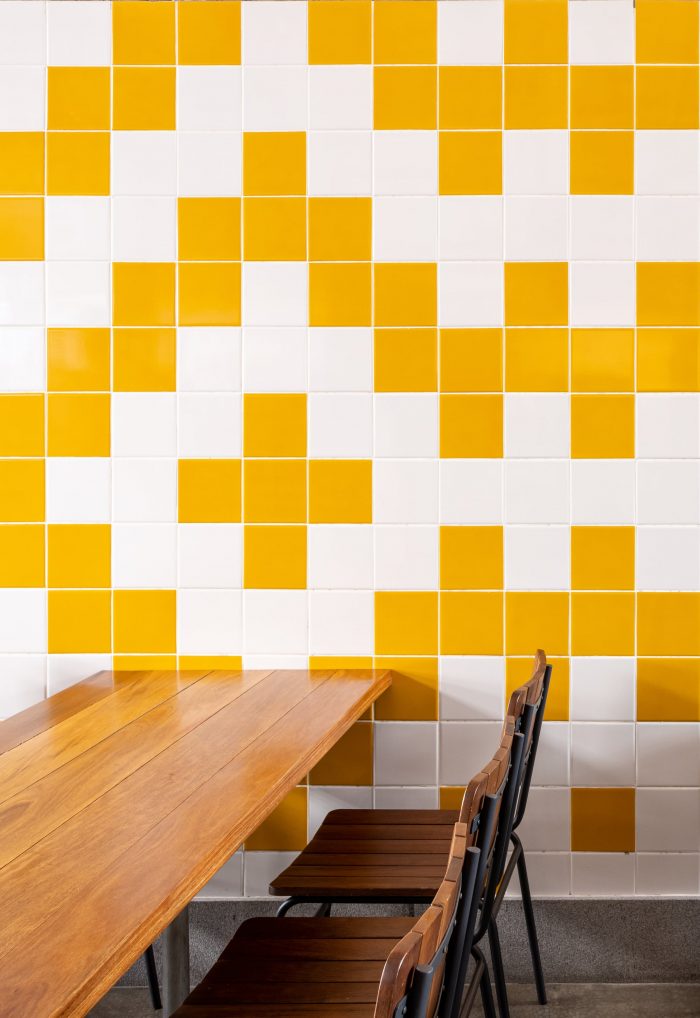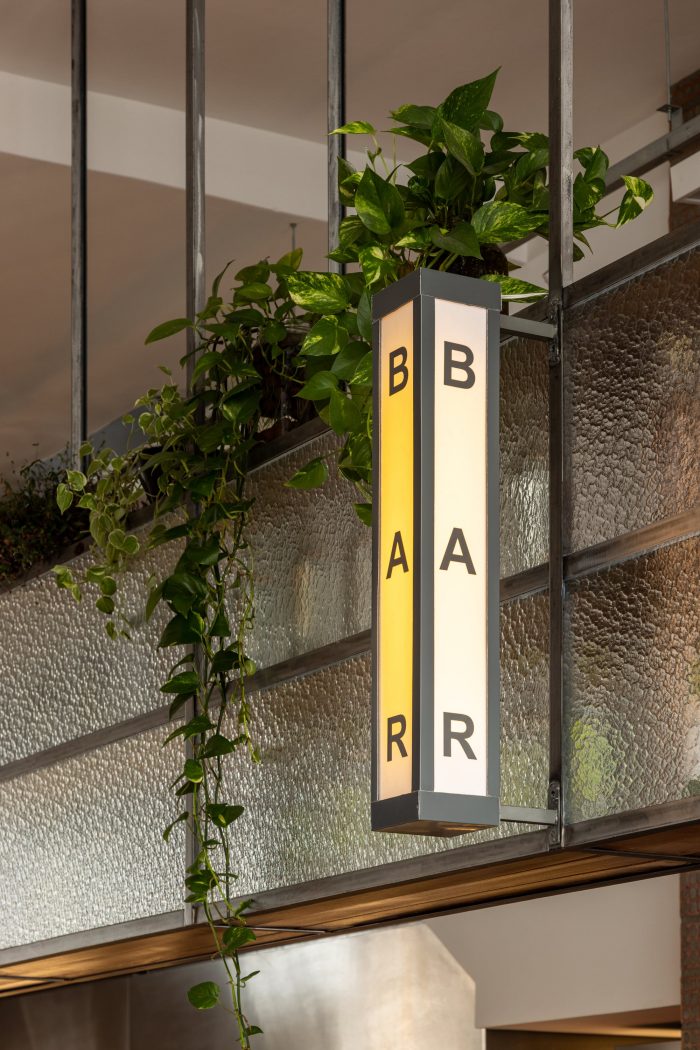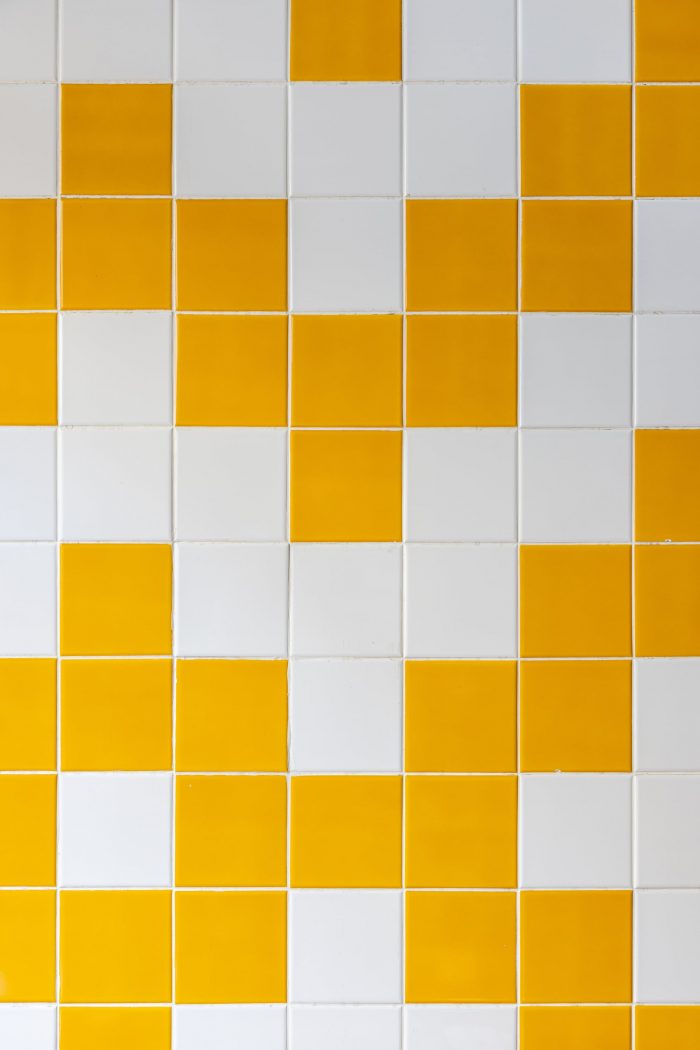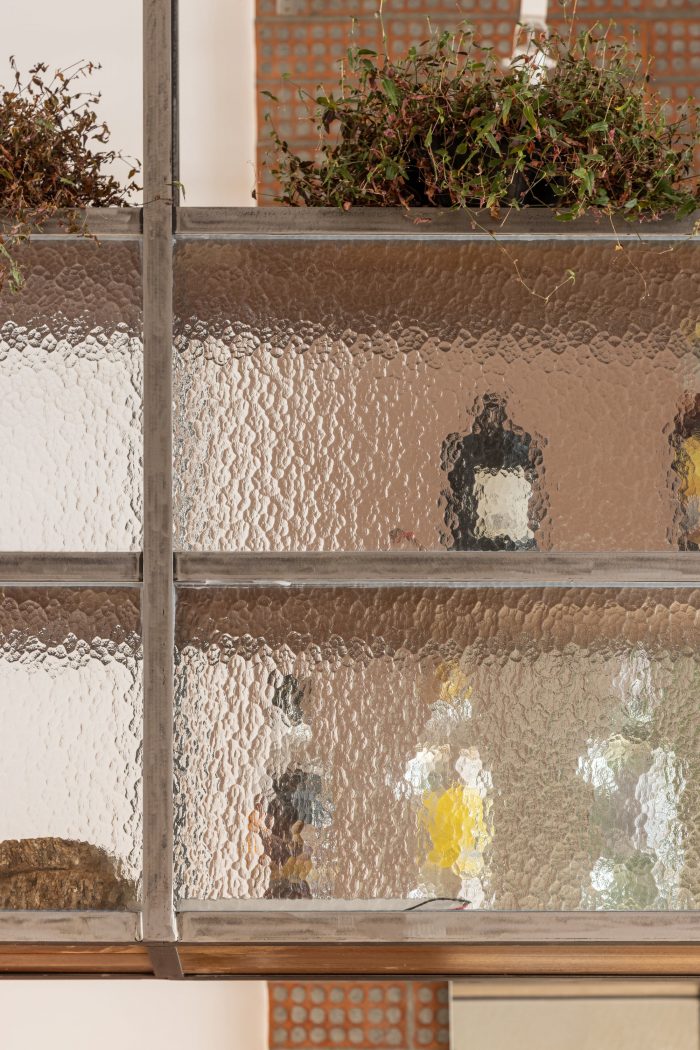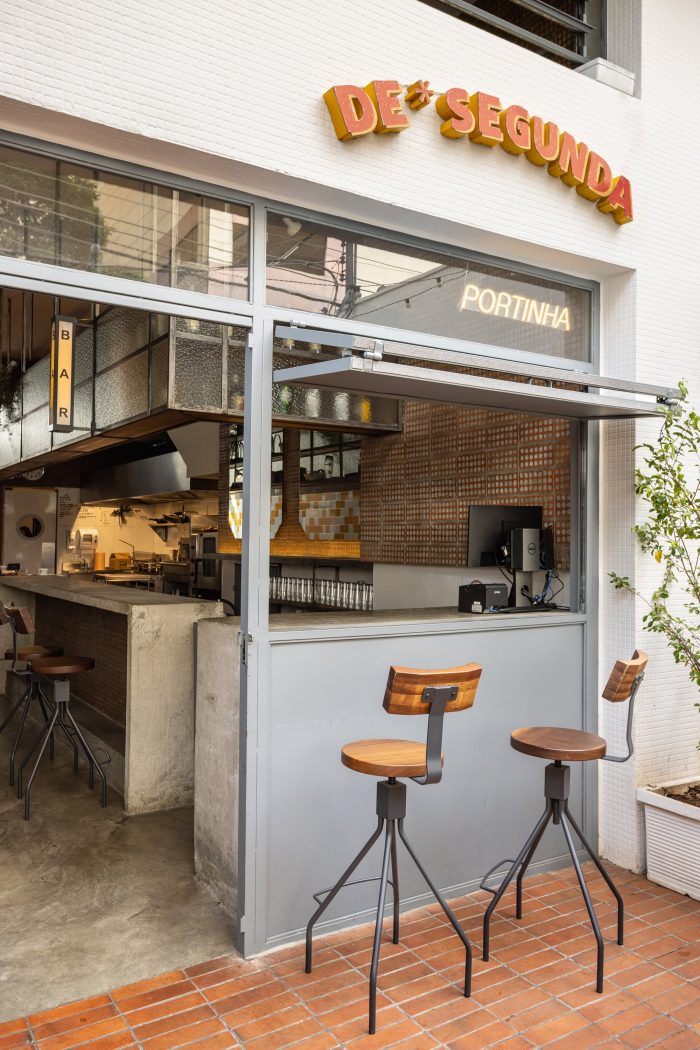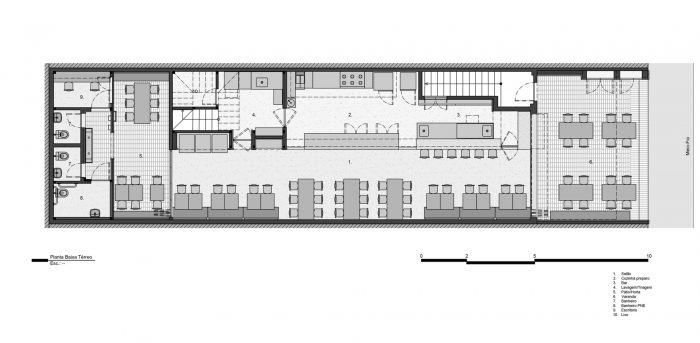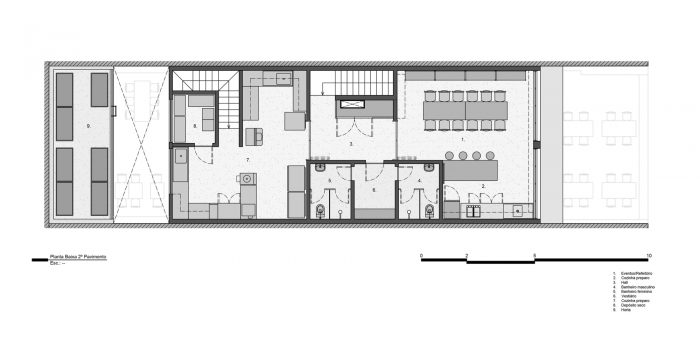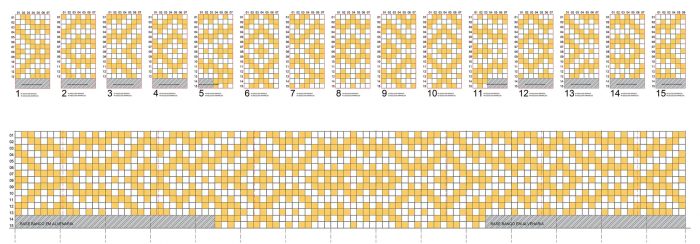这种建筑方法充分利用了建筑中存在的建筑元素。另一个中心思想是厨房和餐桌之间的近似性。
The architectural approach made the most of the architectural elements present in the building. Another central idea was the approximation between kitchen and tables.
如同Tadu的绝大多数项目一样,该餐厅的环境设计考虑到了对我们城市的建筑结构的再利用和再标识。在这种情况下,圣保罗Itaim Bibi社区的一个旧汽车修理店被两位年轻厨师改造成了第一家餐厅。
As in the vast majority of Tadu projects, the restaurant’s environment was designed with the thought of reusing and re-signifying the architectural constructions of our cities. In this case, an old car repair shop in the Itaim Bibi neighborhood, São Paulo, was transformed into the first restaurant by two young chefs.
颜色、味道和质地在建筑、客户和美食之间产生了共鸣。你可以清楚地看到食物的准备和处理。
该项目的作者特质的提议延伸到了分布在墙壁上的白色和黄色瓷砖的分页的数字参数化的阐述。
Colors, flavors, and textures are in resonance between architecture, client, and gastronomy. You can clearly see the preparation and handling of food.
The proposal of authorial traits of the project extended to the digital parametric elaboration of the paging of the white and yellow tiles distributed on the walls.
即使是微妙的,也有一个企业家和品牌的运动,关注与可持续性、社会责任、过程的透明度和产品质量有关的问题。人们对投入时间和资源进行重大的建筑改造不太感兴趣,这些改造往往不能为其销售、定位或寿命提供有效的回报。这样一来,我们可以想象,”有意识的建筑 “可以作为简化流程和项目的准则来培养,其明确的目标是节省时间和资源,而不会对新企业造成美学或经济上的损害。
Even if subtle, there is a movement of entrepreneurs and brands attentive to issues related to sustainability, social responsibility, transparency of processes, and product quality. People are less interested in investing time and resources in major architectural transformations that often do not provide an effective return for their sale, positioning, or longevity. In this way, it is possible to imagine that a “conscious architecture” can be fostered as a guideline for simplified processes and projects, with the clear objective of saving time and resources without aesthetic or financial damage to new businesses.
通过观察食物的准备和处理,可以发现参观空间的丰富体验,此外,建筑元素的存在也有助于揭示建筑的过去和现在。
The richness of the experience of visiting the space is revealed by the observation of the preparation and handling of food, in addition to the presence of architectural elements that help to reveal the past and present of the building.
Architects: Tadu arquitetura
Area : 1830 ft²
Year : 2021
Photographs :Fran Parente
Manufacturers : Azulejos Antigos, CoisasDcasa, Lepri, Macom, Miaki
Lead Architect : Thiago Tavares
Briefing, Design And Project Conceptualization : Thiago Tavares Santos
3 D Design And Modeling : João Duayer
Conceptualization And 3 D Modeling : Clarissa Paes
Work Detailing And Monitoring : Frederico Gomes
Project Detailing : Bruno Bins
Parametric Digital Design Of The Tile Panel : Daniel Vianna
Lighting : Tadu arquitetura
Country:Brazil


